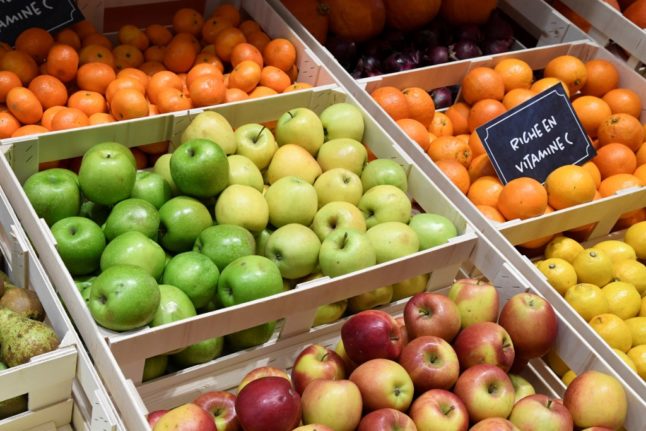Peaches, kiwis, apples, pears, carrots, cucumber, potatoes, turnips, leeks, tomatoes and lettuces are all set to rise dramatically in price after France’s worst drought in 60 years lead to severely reduced harvests.
“We have losses of between 30 and 35 percent on average,” said Jacques Rouchaussé, the president of the vegetable producers union, to the Parisien newspaper.
“Faced with a long drought, such as the one we are experiencing, we have little means to act.”
After a bad summer last year, farmers were expecting a good summer season since the winter frost finally spared the crops. But the lack of rainfall and water restrictions in some regions of France prevent growers from keeping fruit trees and root vegetables undamaged.
“Our products suffer from water stress and come out much smaller,” Françoise Rose, president of the fruit producers union, told the Parisien.
Although growers in the south know how to deal with very dry episodes, the real difficulties are in the regions used to having rain regularly, said Laurent Grandin, president of Interfel, the union for both fresh fruits and vegetables.
“Our sector is not in a catastrophic state as a whole, some areas are suffering more than others,” he added.
“We have to return to a seasonality, we cannot have tomatoes all year round. The consumer must also show frugality,” said Jacques Rouchaussé.
The consumer association Familles Rurales has already recorded an 11 percent increase over one year in fruit and vegetable prices. With smaller quantities and lower quality products, this trend is set to continue in September, including for processed products, such as tomato sauce or tinned soup.
Climate adaptation
With more violent episodes of frost or drought, producers need to adapt to a changing climate.
In the short term, producers are talking about the use of wastewater. They want the establishment of “retention basins”, made up in winter with rainwater in particular and usable in the event of drought in summer.
Another mitigating option to limit the impact of sweltering heat would be to invest in equipment to protect orchards and vegetable gardens such as so-called cold shelters.
“We must all act so that our professions and our cultures remain, said Jacques Rouchaussé. “Otherwise, we will grow tomatoes in the north and the south will only be able to grow rice!”



 Please whitelist us to continue reading.
Please whitelist us to continue reading.
Member comments